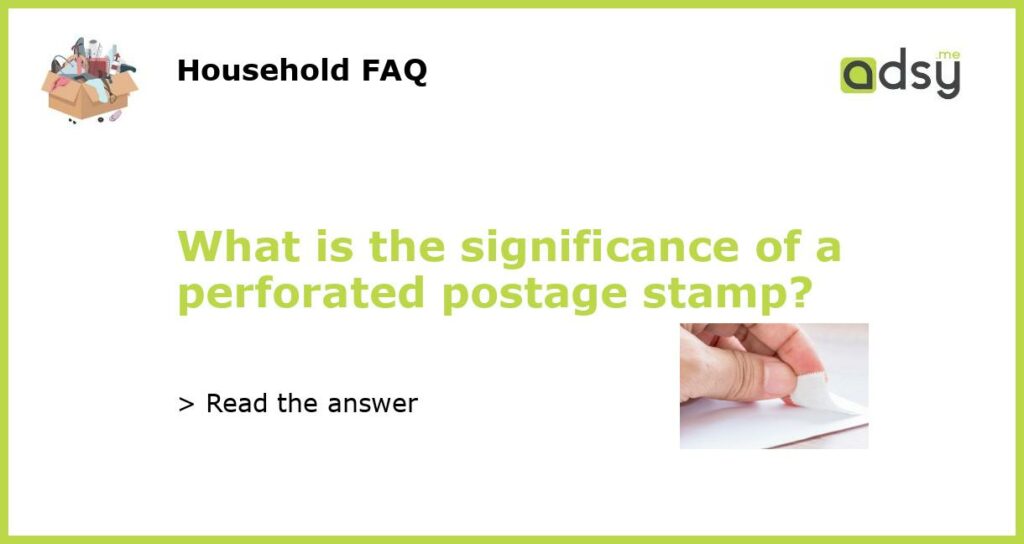The Basics of Postage Stamps
Postage stamps are small, rectangular pieces of paper that are used to indicate that postage for a letter or package has been paid. The first postage stamp was issued in the United Kingdom in 1840, and it featured a portrait of Queen Victoria. Since then, postage stamps have become collectibles in their own right, with some rare stamps selling for millions of dollars at auction.
The Evolution of Perforations
When postage stamps were first introduced, they were printed on large sheets that had to be cut into individual stamps by hand. This process was time-consuming and often resulted in uneven edges. In the 1850s, a process called roulette was introduced, which involved cutting small slits around the edges of the stamp to make it easier to separate from the sheet. This was followed by line perforations, which are the small, regularly spaced holes that we are familiar with today.
The Importance of Perforations
The introduction of perforations was a game-changer for stamp collectors. Prior to perforations, stamps had to be cut from the sheet using scissors or a knife, which often resulted in uneven edges and damaged stamps. With perforations, the stamps could be separated cleanly and easily, and collectors could be sure that the stamp they were buying was in its original, undamaged condition. Additionally, the size and spacing of the perforations became an important factor in determining the authenticity of a stamp.
The Significance of a Perforated Postage Stamp
For collectors, a perforated postage stamp is a symbol of authenticity and the mark of a true collectible. It signifies that the stamp is in its original, undamaged condition and that it has not been altered or forged in any way. Collectors pay top dollar for rare stamps that are in good condition, and a perforated stamp is often the key factor in determining its value. In fact, some stamps that were printed without perforations or with only partial perforations are among the rarest and most valuable stamps in the world.
The Future of Perforations
In recent years, there has been a move away from perforations and towards self-adhesive stamps, which do not require perforations to separate them from the sheet. While self-adhesive stamps are more convenient for everyday use, they lack the collectible value of traditional perforated stamps. However, some countries continue to produce traditional perforated stamps for collectors, and there is still a thriving market for rare and valuable perforated stamps.






